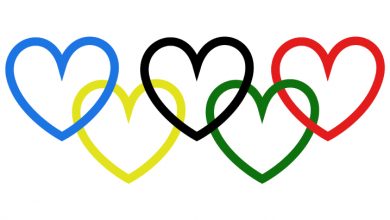Permission to Feel
A simple principle to inform people that they have the permission to feel whatever it is that they are feeling in the training.

Why did I choose this tool?
I believe that one of the most important parts of creating a safe space is to let people know that they have the permission to feel whatever it is that they’re feeling. I chose this tool because I love simple tools that are easy to remember and yet sometimes difficult to put into practice. This tool, while simple, can be very challenging to apply in different circumstances.
How does this apply to being a trainer?
As a trainer, I believe that we have a responsibility to help participants learn, and yet we also have a responsibility to take care of them. Sometimes I think we are so focused on them learning that we forget to take care of them. Often this comes when we overlook the range of emotions that they might be feeling. Depending on our culture and context, we have a specific set of emotions or feelings that we think are OK to feel and others that we think are not OK to feel. When training others, we encounter people from many different cultures and backgrounds, and their expectations may be different than ours. If we want participants to feel safe to express their emotions and feelings, then I believe we first have to give them the permission to feel those emotions and feelings before so they might feel comfortable to share them with others.
For example, if a participant thinks that feeling confused is not OK, then that person may be much less likely to express confusion to the group, which may hinder that person from asking an important question, causing them to do the activity incorrectly and maybe causing more confusion, anger, or frustration amongst the other participants or trainers.
The purpose of this tool is to help us remember, and gain the skills, to create an environment in which the participants feel safe to say how they feel, which I believe starts with them first feeling free to feel.
Content
The content is simple: give participants the permission to feel whatever it is they are feeling.
The application is not so simple.
What does give the permission to feel mean?
For me, it means to explicitly and implicitly let the participants know that it is OK to feel whatever it is that they are feeling.
Why should we give participants the permission to feel all emotions?
When we only let participants feel the emotions that we think are “positive” or “good” emotions, then we are telling them that they shouldn’t feel the “negative” or “bad” emotions, and the problem is, as humans, we feel emotions without trying to feel them.
What can happen is someone may feel an emotion, like anger, and then feel angry at themselves for feeling angry. They then may feel angry for feeling angry for feeling angry. This loop may repeat and intensify and then the emotion may come out in different ways. If they believe they’re not allowed to feel angry, then they’re not allowed to say that they feel angry, and so they may show their anger with their actions and not their words. The physical expression of anger may lead to the slamming of doors, throwing of things, angry looks at people, or gestures that may confuse the other participants or trainers.
By giving participants the permission to feel angry, or whichever emotion, we can help them break that loop. Instead of feeling angry and then feeling angry for feeling angry, they may feel angry and then accept that they feel angry, which may help the emotion naturally reduce in themselves. Also, if they think that other people think that it’s OK to feel angry, they may feel more comfortable in sharing verbally that they feel angry and what they think is causing them to feel angry, which may lead the other participants and trainers to have a deeper understanding, and even reciprocate by sharing how they feel.
How will this lead to people feeling safe to freely express their feelings and emotions?
Sometimes we are our biggest critics. When we get to the point where we don’t judge ourselves for the emotions that we’re feeling, we may feel more confident in expressing these emotions to others, especially if we think that others also think that these emotions are OK.
But what if I don’t believe that it’s OK to feel all of the emotions?
I think it means you’re human. I think we all have learned from our parents and communities that certain emotions are OK and others are not, and even if we do believe that they’re all OK, we often have to practice our whole lives to align those beliefs with our actions—again, I think it’s simple but very difficult.
Should I give participants to feel all emotions even if I don’t believe that?
I would say no. I believe that if you give participants the permission to feel an emotion that you personally do not believe one should feel, then it may lead to challenges for you. For example, if you don’t think it’s OK for people to feel sad, and yet you tell participants that it is OK to feel sad, they may express sadness and it may push you further beyond your limits than you had wanted to be pushed.
That being said, I think even more important than giving participants the permission to feel, we need to first give ourselves the permission to feel.
How can we give the permission to feel?
There are many different tools we can use to convey this principle to ourselves and to the participants.
First, we can model the behavior ourselves.
- We can tell stories about our lives that include a wide range of emotions, talking about the importance of feeling all the emotions.
- We can openly reflect on our emotional states during the training, showing a wide range of emotions—maybe from sadness to pride to frustration to confusion to joy—to lead by example.
- We can participate in some of the training activities and show feelings that others may not show—e.g., if doing a journaling activity, we can journal as well, and share what we journaled, showing that if the trainer is feeling all of these emotions, then it’s OK for participants to feel them.
Second, we can use our spoken words. Some things we can say are:
- “It’s OK to feel whatever you are feeling.”
- “It’s OK to feel uncomfortable.”
- “It’s OK to feel angry.”
- We can ask, “How many people in the room feel a little confused right now?” and we can put our hand up as well, to show people they are not alone in feeling that way.
- “If you’re feeling X, that’s OK, you’re probably not the only one feeling it.”
- “There are no right or wrong emotions.”
Third, we can use written words. Some things we can do are:
- Put up signs on the wall that remind people:
- “It’s OK to feel.”
- “It’s OK to feel angry and it’s OK to say you feel angry.”
- “It’s OK to feel confused…we’re all humans, none of us knows all the answers.”
- “It’s OK to feel uncomfortable and want to stop…we all move at different paces.”
- Write similar permissions on the top of the instructions sheet for the activity.
Fourth, we can use activities. Some things we can do are:
- Ask ourselves a series of questions, “What is one thing that currently makes me feel ___?” and rotate through different emotional words in the blank.
- Set a timer (or a specified distance) and try to feel a specific emotion for that time and then rotate to another. For example, for 1 minute, try to feel angry. Then for the next minute, try to feel sad. Then for the next, joyful. Then grateful, confused, etc.
- Ask ourselves a series of questions, “How do I feel right now?” and keep going for a few minutes.
- Journal about which emotions one thinks are OK and not OK, and then change contexts. For example, write for 5 minutes about all the emotions one can express to their mother and cannot express to their mother; then 5 minutes on all the emotions one can express at work and cannot express at work, etc.
What are some examples of things that trainers may feel on a training?
Proud that their session went well. Frustrated with fellow trainers. Grateful to be supported by so many people. Sad that their family member is struggling with cancer. Embarrassed that they gained weight. Guilty that their session went too long. Confident that participants will learn something. Sexually attracted to one of the participants. Scared to leave the training and go back home. Motivated to do more trainings. Hopeful for the future.
What are some examples of things that participants may feel on a training?
Confused by the workshop. Shy when meeting new people. Excited to be in a new country. Sad to be away from family. Triumphant when they complete the exercise. Angry at one of the trainers. Scared by one of the trainers. In love with one of the trainers. Rushed by the speed of the training. Bored by the activities. Exhausted from the schedule. Sick from the lack of sleep. Bliss from being part of the group.
Closing
When we give people the permission to feel whatever they’re feeling, we give them the permission to be themselves.
Reflection Questions:
- How do you feel when you think about showing all your emotions to the participants?
- What is one time when you were a participant and you thought the trainer didn’t care about how you were feeling?
- What is one time when you were a participant and you thought the trainer cared about how you were feeling?
- How do you feel when you think about being in a group where they let you feel of your emotions?
- How do you feel when you think about someone telling you to stop worrying?
- How do you feel when you think about someone telling you to not get so angry?
- How do you feel when you think about someone telling you that it’s OK to feel whatever you’re feeling?
- How do you imagine a participate might feel when they think about feeling the wrong way?
- What is one time when you can remember giving people permission to feel however they were feeling?
Exercises:
How to apply it in everyday life
- Give your significant other the permission to feel however they are feeling.
- Let your children know that it is OK for them to feel whichever emotion they are feeling.
- Say to yourself that there are no “right” or “wrong” emotions, and that it’s OK to feel all the emotions.
- Play with some of the different variables listed above—such as modeling, spoken word, written word, exercises, etc.—to see how they affect the comfort of a group.





